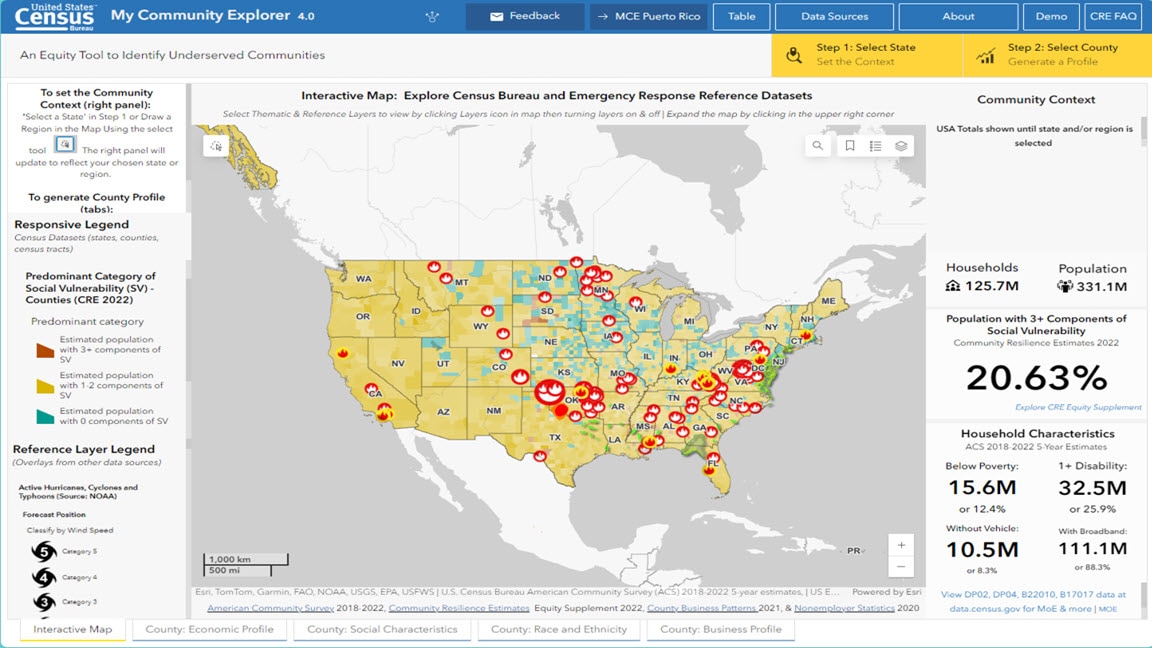Advancing Equity with Data
Data for Equity
The Census Bureau is committed to producing data that depict an accurate portrait of America, including its underserved communities. Some of our data equity services include:
Demographic Data: We provide a wealth of data by key demographic variables such as race, ethnicity, sex, disability, income, and veteran status to help measure equity. These data are often by geography, which provides meaning and context to the statistical data, and can identify rural and underserved communities. Explore demographic data with our data tools such as data.census.gov.
Data Tools: We supply a variety of data tools that help the public and policy makers understand the issues surrounding inequities and enable them to propose effective, data-based solutions.
Public Assistance Program Metrics: Among other uses, Census Bureau data can provide metrics to show public assistance programs’ progress and outcomes.
Racial and Ethnic Diversity Measurement: We use several approaches to measure the racial and ethnic diversity of the U.S. population, including the diversity index, prevalence rankings, the diffusion score, and a series of prevalence maps.
Data Education: A major part of our mission is to educate the public, policy makers, and stakeholders on what data we have available and how to use them. To empower data users with understandable, accurate, and timely information and the knowledge to use it, we invite you to:
- Explore our online Census Academy for upcoming webinars and on-demand data training.
- Browse our Data Equity Library with its online collection of equity-related data visualizations, infographics, photos, audio, video, working papers and more.
Census Bureau data are valuable assets that can be used by policymakers and the public to advance equity.
Data Tools
How to Use Data Tools
Press Release
Press Release
America Counts: Data Equity Stories
Data Programs
Experimental Data Product
Experimental Data Product
Experimental Data Product
Visualizations
Related Topics
Partner Collaboration
We strive to make our data widely available and to provide equity in access to our data.






